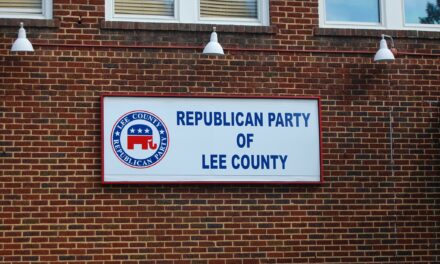We support our Publishers and Content Creators. You can view this story on their website by CLICKING HERE.
In these polarizing times, it seems little wonder that even federal buildings have turned into political battlefields. In his final weeks in office in late 2020, President Trump signed an executive order establishing classical architecture as the official basis for federal building design— only to have Joe Biden promptly revoke the order upon taking office two months later.
A new exhibit at the National Building Museum wades into the dispute by examining the style of architecture that many observers love to hate. In studying eight modern structures in Washington’s urban core, “Capital Brutalism” attempts to bring context to a style that seems ever-present around the District of Columbia.
Critics’ Complaints
The exhibit does not shy away from the insults lobbed at Brutalist buildings over the years. It quotes the late Housing and Urban Development Secretary Jack Kemp as calling the departmental headquarters building he worked in “ten floors of basement,” despite the fact that notable architect Marcel Breuer designed the structure. (In this case at least, objection to the building appears bipartisan, as Barack Obama’s first HUD secretary, Shaun Donovan, called it “the most reviled in all of Washington — and with good reason.”)
In another case, The New York Times’ Ada Louise Huxtable called the Smithsonian’s Hirshhorn Institution as “lack[ing] the essential factors of aesthetic strength and provocative vitality;” elsewhere, the Times dubbed the structure “a bomb shelter.” Sad to say, that Brutalist “bomb shelter” stands on the National Mall, directly across from the neo-classical National Archives and the National Gallery of Art’s Sculpture Gallery. And an attempt to revamp the Hirshhorn by creating an inflatable bubble in its open-air atrium, a proposal that notable architect Frank Gehry called “refreshing,” got shelved more than a decade ago due to cost concerns.
The public tends to agree with the Brutalist critics. As the exhibit points out, a 2023 survey found the FBI’s downtown Washington headquarters the ugliest building in the nation, and the second ugliest in the world, behind only the Scottish Parliament building in Edinburgh.
Ugly Architecture, Big Government
It seems not entirely coincidental that the rise of Brutalism — the term originates from the French beton brut, or “raw concrete” — reached its zenith during the 1950s and 1960s, including the height of Lyndon Johnson’s Great Society. The blocky concrete structures hint at a government Goliath showing its dominance, and to critics, an ugliness overpowering the landscape.
The exhibit occasionally alludes to this philosophy, when it quotes the headline of a 2021 Washington Post article: “Brutalist Buildings Aren’t Unlovable — You’re Looking at Them Wrong.” To suggest that individuals are mistaken in their beliefs about architecture echoes the same kind of big-government paternalism that derides people as “deplorable” for “clinging to their guns and religion.”
Other comments in the exhibit imbue a paternalistic philosophy when they rationalize Brutalist architecture by arguing the impossibility of starting over: “The carbon crisis demands a less binary approach. To allow our cities to grow and evolve in a healthy way while minimizing carbon emissions, we have to find a ‘third ways’ [sic] forward.” You may hate that ugly building, but the “carbon crisis” demands it stay.
Can Brutalism Be Saved?
The exhibit does try to sand the rough edges off of Brutalism, “reimagining” each of the buildings’ structures, with greater or lesser degrees of success. For instance, one proposal suggests that a portion of the Forrestal Building (which houses the Department of Energy) overlooking 10th Street SW be removed to restore vistas to the Smithsonian Castle.
But the suggestion that portions of the building be repurposed for residential housing makes little sense, as plopping down a massive concrete block between row houses seems neither practical nor likely to be welcomed. Would you want a structure like this in your neighborhood?
My favorite “reimagining” idea came for the Hubert Humphrey Building, now home to the Department of Health and Human Services. The proposal envisions a Temple of Play, the headquarters of the new Department of Play, with “the addition of several pyramidal stories to create even more space for slides, climbing facilities, affordable dining, and other amenities, all with the goal of improving the mental and physical health of people from across the U.S.” Absurd and silly, yes — but in some respects, far less damaging than the bloated welfare state firmly ensconced in the Humphrey Building at present.
Perhaps the most appropriate quote in the entire exhibit came from critic Wolf Von Eckardt, who termed the FBI headquarters building “the perfect stage set for a dramatization of George Orwell’s 1984.” Von Eckardt understands the parallels between an overbearing government and the architectural style that came of age in the middle of the 20th century. In that sense, “Capital Brutalism” shows why conservatives should want to place Brutalist architecture right where Ronald Reagan (along with his ally Margaret Thatcher) consigned Soviet Communism — to the ash heap of history.
“Capital Brutalism” is on view at Washington’s National Building Museum now through Feb. 17.

 Conservative
Conservative  Search
Search Trending
Trending Current News
Current News 





